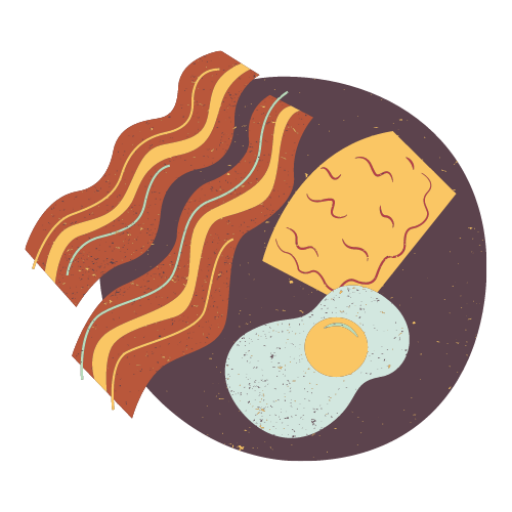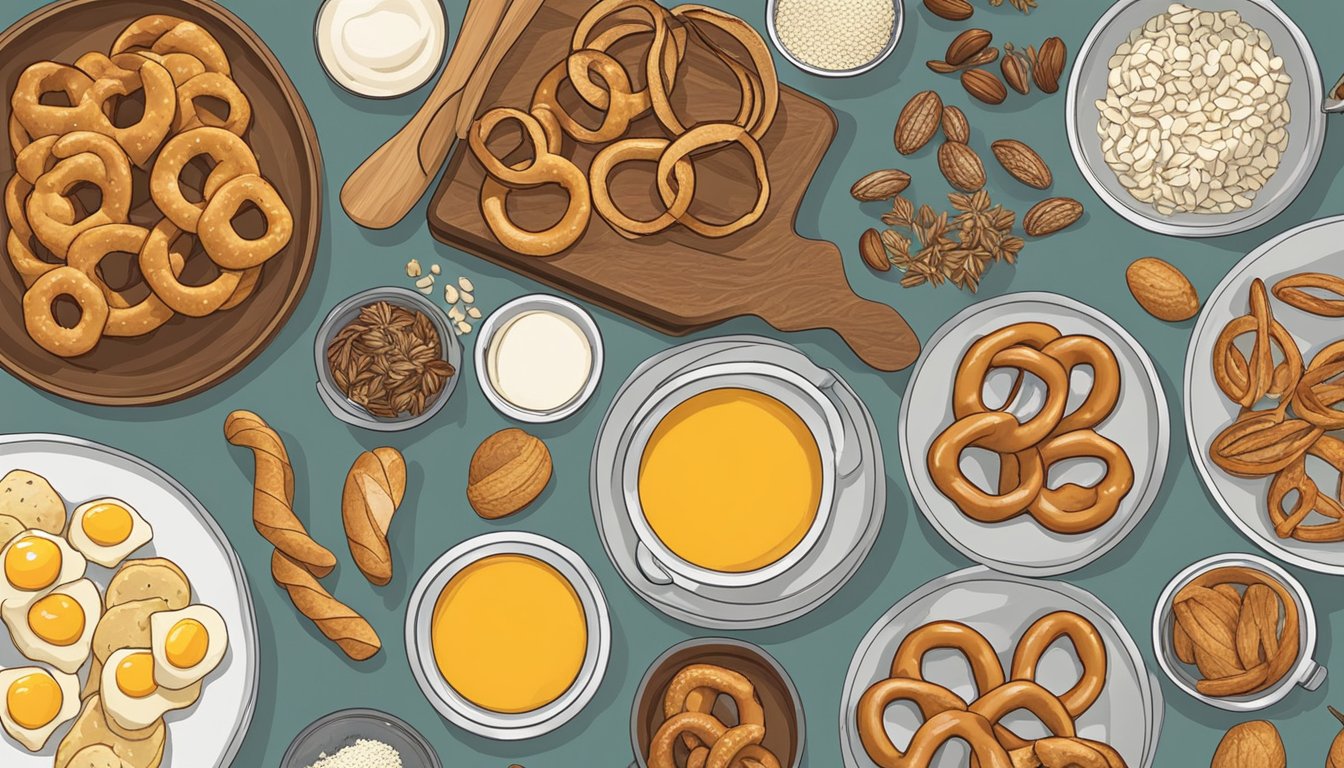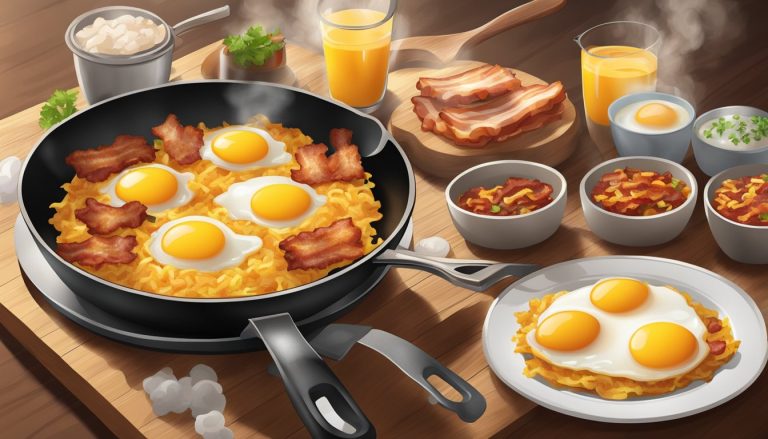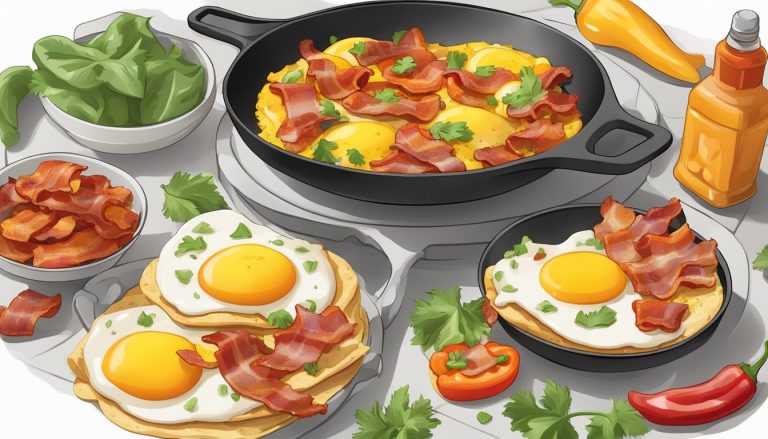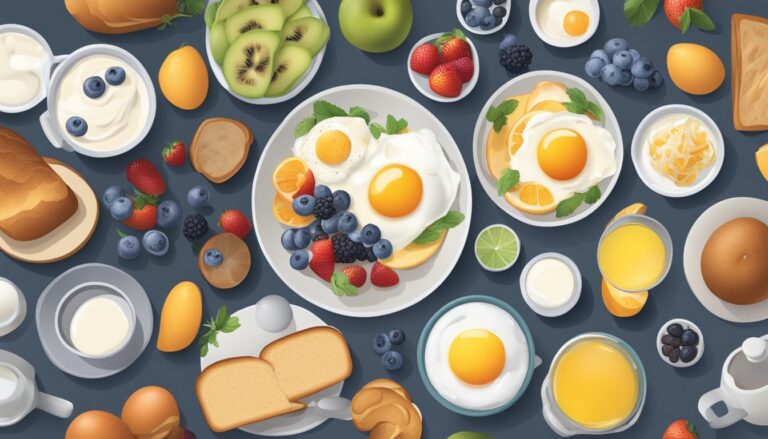Homemade breakfast pretzels offer a delightful twist on the classic soft pretzel, perfect for starting your day with a warm, comforting treat. These savory pastries combine the chewy texture of traditional pretzels with breakfast-inspired flavors, creating a unique morning indulgence. Making breakfast pretzels at home is surprisingly simple and requires just a few basic ingredients: flour, yeast, water, sugar, and salt.
The process begins with preparing a yeast dough, allowing it to rise until doubled in size. Once the dough is ready, it’s shaped into pretzel forms and briefly boiled in a baking soda solution before baking. This step gives the pretzels their characteristic golden-brown exterior and chewy texture. For a breakfast twist, consider adding ingredients like cheese, bacon bits, or everything bagel seasoning to the dough or as toppings.
Homemade soft pretzels can be customized to suit various tastes and dietary preferences. By making them from scratch, you control the ingredients and can experiment with different flavors and shapes. Whether you prefer classic twists or bite-sized nuggets, these homemade breakfast pretzels are sure to become a family favorite.
Understanding the Basics of Pretzel Making
Pretzels are versatile baked goods with a rich history and distinct shape. Their preparation involves specific techniques and ingredients that contribute to their unique texture and flavor.
History of Pretzels
Pretzels originated in European monasteries during the Middle Ages. Monks created these twisted treats as rewards for children who learned their prayers. The pretzel’s shape symbolized arms crossed in prayer.
Over time, pretzels spread beyond monastery walls. They became popular street food in Germany and surrounding regions. Immigrants later brought pretzel-making traditions to America.
In the 20th century, soft pretzels gained widespread popularity. Auntie Anne’s, founded in 1988, played a significant role in popularizing mall-based pretzel shops across the United States.
Types of Pretzels
Two main types of pretzels exist: hard and soft. Hard pretzels are thin, crispy snacks often enjoyed straight from the bag. Soft pretzels, in contrast, have a chewy texture and are typically served warm.
The classic pretzel twist is the most recognizable shape. It features three distinct loops. Other common shapes include sticks, nuggets, and braids.
Flavors vary widely. Traditional pretzels are salted, but sweet and savory variations exist. Popular options include cinnamon sugar, garlic parmesan, and chocolate-covered pretzels.
Pretzel sizes range from bite-sized to extra large. Some bakeries and theme parks offer giant pretzels as novelty items or shareable snacks.
Gathering Your Ingredients

Selecting quality ingredients is crucial for creating delicious homemade breakfast pretzels. The right combination of flour, yeast, sweeteners, and liquids will ensure optimal texture and flavor.
Choosing the Right Flour
All-purpose flour is the go-to choice for breakfast pretzels. It provides the ideal balance of protein content for proper gluten development.
Look for unbleached all-purpose flour for a more natural option. For a chewier texture, bread flour can be used as a substitute.
Consider whole wheat flour for added nutrition, but use it in combination with all-purpose flour to maintain softness.
Yeast: Active Dry vs. Instant
Active dry yeast and instant yeast are both suitable for pretzel making. Active dry yeast requires proofing in warm water before use.
Instant yeast can be mixed directly with dry ingredients. It acts faster and may reduce rising time.
For consistent results, use fresh yeast within its expiration date. Store yeast in a cool, dry place to maintain its potency.
Sweeteners: Sugar Options
Light brown sugar adds a subtle molasses flavor to breakfast pretzels. It contributes to a golden-brown crust during baking.
Granulated sugar is a neutral sweetener that enhances yeast activity. It helps achieve a tender crumb structure.
Consider alternatives like honey or maple syrup for unique flavor profiles. Adjust liquid ingredients when using these sweeteners.
| Sweetener | Flavor Profile | Texture Impact |
|---|---|---|
| Light Brown Sugar | Caramel notes | Softer crumb |
| Granulated Sugar | Neutral | Crisp exterior |
| Honey | Floral sweetness | Moist interior |
Liquid Ingredients
Warm water is essential for activating yeast. Aim for a temperature between 105°F and 115°F (40°C to 46°C).
Milk can replace some or all of the water for richer pretzels. It adds fat and sugars that contribute to browning.
Melted butter enhances flavor and tenderness. Incorporate it into the dough or use as a topping before baking.
Consider adding a small amount of oil to the dough. It can improve shelf life and help maintain softness.
Creating the Perfect Pretzel Dough
The foundation of delicious homemade breakfast pretzels lies in mastering the dough. A well-crafted pretzel dough balances texture and flavor, resulting in soft yet chewy pretzels with a golden-brown exterior.
Mixing and Kneading the Dough
Start by activating the yeast in warm water with a teaspoon of sugar. Let it rest for 10 minutes until foamy. In a large bowl or stand mixer, combine flour, remaining sugar, and salt. Add the yeast mixture and mix until a dough forms.
Knead the dough for 8-10 minutes by hand or 5-6 minutes with a dough hook. The dough should be smooth and elastic. If it’s too sticky, add small amounts of flour. For softer pretzels, incorporate a tablespoon of melted butter or oil during kneading.
Test the dough by pressing it gently. It should spring back slowly, indicating proper gluten development.
Proofing the Dough
Place the kneaded dough in a lightly oiled bowl. Cover with a damp cloth or plastic wrap. Let it rise in a warm spot for 1 to 2 hours until doubled in size.
For enhanced flavor, consider a slow rise in the refrigerator overnight. This cold fermentation develops more complex flavors in the pretzel dough.
After the first rise, punch down the dough gently to release air bubbles. Divide it into equal portions for shaping. Let the portioned dough rest for 10 minutes before shaping to relax the gluten, making it easier to form pretzel shapes.
Shaping and Baking
Transforming pretzel dough into perfectly shaped, golden-brown breakfast treats involves several key steps. These include forming the classic pretzel shape, giving them a baking soda bath, and baking to crispy perfection.
Forming the Pretzel Shape
Divide the risen dough into 6-8 equal portions. Roll each piece into a long rope, about 20-24 inches in length. To create the pretzel shape, form a U-shape with the rope. Cross the ends over each other twice, then press them onto the bottom of the U.
For variety, shape some into pretzel bites or dinner rolls. Pretzel bites are made by cutting the rope into 1-inch pieces. For rolls, simply form the dough into small balls.
Place the shaped pretzels onto a parchment-lined baking sheet. Let them rest for 10-15 minutes before the next step.
Preparing the Baking Soda Bath
Fill a large, wide pot with 6 cups of water and 2 tablespoons of baking soda. Bring this mixture to a boil. The baking soda bath is crucial for achieving that distinctive pretzel flavor and texture.
Using a slotted spatula, gently lower each pretzel into the boiling water. Let it sit for 20-30 seconds, then remove it and place it back on the parchment-lined baking sheet.
Be careful not to leave pretzels in the bath for too long, as this can impart a metallic taste. Allow excess water to drip off before placing them on the baking sheet.
Baking to a Golden Brown
Preheat the oven to 450°F (230°C). Before baking, brush the pretzels with an egg wash for shine and sprinkle with coarse salt if desired.
Bake the pretzels for 12-15 minutes, or until they develop a rich, golden-brown crust. Rotate the baking sheet halfway through for even browning.
For softer pretzels, reduce the baking time slightly. For a crispier exterior, leave them in a bit longer. Keep a close eye on them to prevent over-browning.
Once baked, transfer the pretzels to a cooling rack. Let them cool for a few minutes before serving to allow the crust to set and the interior to finish cooking.
Customizing Your Pretzels

Homemade pretzels offer endless opportunities for personalization. Experiment with different toppings, flavors, and dipping sauces to create your perfect breakfast pretzel.
Savory Topping Variations
Brush pretzels with melted butter before adding toppings for better adherence. Sprinkle pretzel salt or coarse kosher salt for a classic taste. Try everything bagel seasoning for a flavorful twist.
Create cheese pretzels by sprinkling grated cheddar or parmesan before baking. Add dried herbs like rosemary or thyme for an aromatic touch.
For a savory-sweet combo, top pretzels with sea salt and a drizzle of honey. Experiment with garlic powder, onion flakes, or poppy seeds for unique flavors.
Sweet Pretzel Variations
Cinnamon sugar pretzels are a popular sweet option. Mix ground cinnamon with granulated sugar and sprinkle over buttered pretzels before baking.
Try a chocolate drizzle for indulgent pretzels. Melt chocolate chips and drizzle over baked pretzels. Add chopped nuts for extra crunch.
Create fruit-flavored pretzels by mixing dried fruit powder with sugar. Sprinkle this mixture over pretzels before baking for a fruity twist.
Dipping Sauces
Elevate your pretzels with homemade dipping sauces. Spicy nacho cheese sauce pairs well with savory pretzels. Melt cheese with jalapeños and spices for a kick.
Beer cheese dip complements pretzels perfectly. Combine melted cheese, beer, and seasonings for a rich, tangy sauce.
For sweet pretzels, try a cream cheese frosting dip. Mix softened cream cheese with powdered sugar and vanilla extract.
Create a mustard dip by combining Dijon mustard with honey and a splash of apple cider vinegar. This tangy-sweet sauce balances pretzel flavors nicely.
Storing and Keeping Pretzels Fresh

Proper storage is key to maintaining the taste and texture of homemade breakfast pretzels. Three effective methods help preserve their freshness and flavor for extended periods.
Airtight Containers
Storing pretzels in airtight containers is crucial for short-term freshness. Choose containers with tight-fitting lids to prevent air from entering.
Glass or plastic containers work well. Ensure pretzels are completely cool before storing to avoid condensation.
Place a paper towel at the bottom of the container to absorb excess moisture. This helps maintain the pretzels’ texture.
For optimal results, consume within 2-3 days when stored at room temperature. Avoid refrigeration, as it can make pretzels tough and chewy.
Freezing for Long-Term Storage
Freezing extends the shelf life of homemade pretzels significantly. Wrap each pretzel individually in plastic wrap or aluminum foil.
Place wrapped pretzels in a freezer-safe bag or container. Remove as much air as possible to prevent freezer burn.
Label the container with the date and contents. Frozen pretzels remain fresh for up to 3 months.
When ready to eat, thaw frozen pretzels at room temperature for about an hour. Alternatively, use the defrost setting on your microwave for quicker results.
Reheating Leftovers
Properly reheating leftover pretzels restores their original texture and flavor. Preheat your oven to 350°F (175°C).
Lightly sprinkle water on the pretzels to add moisture. Wrap them loosely in aluminum foil.
Place the foil-wrapped pretzels in the preheated oven for 3-5 minutes. For a crispier exterior, open the foil for the last minute of heating.
Avoid using the microwave for reheating, as it can make pretzels soggy. If necessary, microwave for no more than 10-15 seconds on medium power.
Nutritional and Dietary Considerations

Homemade breakfast pretzels offer flexibility in tailoring their nutritional profile to various dietary needs. Understanding their caloric content, macronutrient breakdown, and potential modifications can help make informed choices.
Calories and Macronutrients
A typical serving of 10 pretzel twists (60 grams) contains approximately 230 calories. This serving provides 1 gram of fat, with no saturated fat. Pretzels are primarily a carbohydrate-based snack, making them a quick source of energy.
The sodium content is notable at 744 mg per serving, which is about 31% of the recommended daily intake. Pretzels are low in protein, containing only trace amounts.
| Nutrient | Amount per Serving |
|---|---|
| Calories | 230 |
| Fat | 1g |
| Carbohydrates | 47g |
| Protein | 6g |
| Sodium | 744mg |
Gluten-Free and Vegan Options
Traditional pretzels contain wheat flour, making them unsuitable for those with gluten sensitivities or celiac disease. Gluten-free alternatives can be made using rice flour, almond flour, or a gluten-free flour blend.
For vegan breakfast pretzels, replace any dairy ingredients with plant-based alternatives. Use plant-based milk instead of regular milk, and brush the pretzels with olive oil instead of an egg wash before baking.
Experiment with different flours and ingredients to create pretzels that fit specific dietary requirements without compromising on taste or texture.
